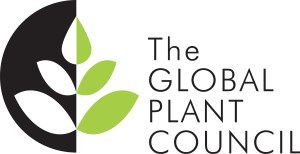This weeks Arabidopsis Research Roundup sees a small number of high quality publications driven by UK-based researchers together with a couple of collaborative efforts that highlight the international aspect of research. Topics include two greatly different descriptions of how a plant responds to attack, an investigation into the intersection of vesicle and potassium transport as well as descriptions of auxin and sugar signaling.
Sarris PF, Duxbury Z, Huh SU, Ma Y, Segonzac C, Sklenar J, Derbyshire P, Cevik V, Rallapalli G, Saucet SB, Wirthmueller L, Menke FL, Sohn KH, Jones JD (2015) A Plant Immune Receptor Detects Pathogen Effectors that Target WRKY Transcription Factors. Cell 161, p1089-1100 http://dx.doi.org/10.1016/j.cell.2015.04.024
Jonathan Jones at the Sainsbury lab collaborated with his ex-PhD student Kee Hoon Sohn (now at Massey University in NZ) to produce this high profile publication in Cell. Professor Jones’s group has been in the vanguard of research into the response to bacterial pathogens and this paper adds a further layer of understanding as they show that the plant uses a bacteria’s own ‘attack mechanism’ against itself. Many bacterial effector proteins target WRKY DNA-binding protein domains in order to interfere with transcription. This work shows that the plant defence factor RRS1 also contains a WRKY domain, enabling it to ‘sense’ when the bacteria is in the cell and act as a decoy that makes the bacteria subsequently open to attack.
Jaouannet M, Morris JA, Hedley PE, Bos JI (2015) Characterization of Arabidopsis Transcriptional Responses to Different Aphid Species Reveals Genes that Contribute to Host Susceptibility and Non-host Resistance. PLos Pathogens 11: e1004918.
The group of Jorunn Bos at the James Hutton Institute in Dundee looked at a different aspect of the defence response whereby they investigated transcriptional responses to aphid predation on Arabidopsis. Host and non-host responses to aphids show a high degree of overlap in expression but interestingly the host response included repressive of genes involved in metabolism and oxidative response. This type of study will pave the way for the future development of aphid control strategies in crop plants and once again highlights the utility of Arabidopsis as a model system.
Zhang B, Karnik R, Wang Y, Wallmeroth N, Blatt MR, Grefen C (2015) The Arabidopsis R-SNARE VAMP721 Interacts with KAT1 and KC1 K+ Channels to Moderate K+ Current at the Plasma Membrane Plant Cell [Epub]
Control of potassium channels is the focus of this work from Mike Blatt’s lab at the University of Glasgow. They identify a subset of SNARE proteins (that are involved in vesicle trafficing) that control K+ channels, albeit in an unconventional manner. The vesicle-associated membrane proteins 721 (VAMP721) is able to target vesicles as well as supressing the actitivty of the K+ channels KAT1 and KC. This leads to a model whereby different subsets of SNARE proteins opposingly effect K+ channel activity alongside having an effect on vesicular transport.
Panoli A, Martin MV, Alandete-Saez M, Simon M, Neff C, Swarup R, Bellido A, Yuan L, Pagnussat GC, Sundaresan V. (2015) Auxin Import and Local Auxin Biosynthesis Are Required for Mitotic Divisions, Cell Expansion and Cell Specification during Female Gametophyte Development in Arabidopsis thaliana. PLoS One. 10:e0126164.
The primary interest of Ranjan Swarup’s group at the University of Nottingham is in hormone signalling and root development yet he is included as a collaborator in this publication led from UC-Davies that focusses on auxin signalling during female gametophyte development. The paper shows that the YUCCA family of the auxin biosynthetic genes are asymmetrically expressed during embryo sac development and that the AUX1 and LAX1 auxin influx carriers are expressed only at both the micropylar pole of the embryo sac and in adjacent cells of the ovule. In addition aux1lax1lax2 triple mutants show numerous gametophytic developmental defects. Given the importance of auxin in most aspects of plant development, this paper highlights the specific manner in which auxin is required for mitotic divisions, cell expansion and patterning during embryo sac development.
Zheng L, Shang L, Chen X, Zhang L, Xia Y, Smith C, Bevan MW, Li Y, Jing HC (2015) TANG, Encoding a Symplekin_C Domain-contained Protein, Influences Sugar Responses in Arabidopsis Plant Physiol [Epub]
Mike Bevan at the JIC is a collaborator on this Chinese driven project that investigates Arabidopsis tang1 mutants. These plants are hypersensitive to sugar amd following a classic map-based cloning approach, the TANG1 gene was found to encode a novel protein with a predicted Symplekin tight junction protein C-terminal. As TANG1 is ubquitiously expressed and has little effect on known sugar signalling pathways, the precise in vivo role of the protein remains somewhat opaque even though it is clearly an important player in the response to sugar in Arabidopsis.













